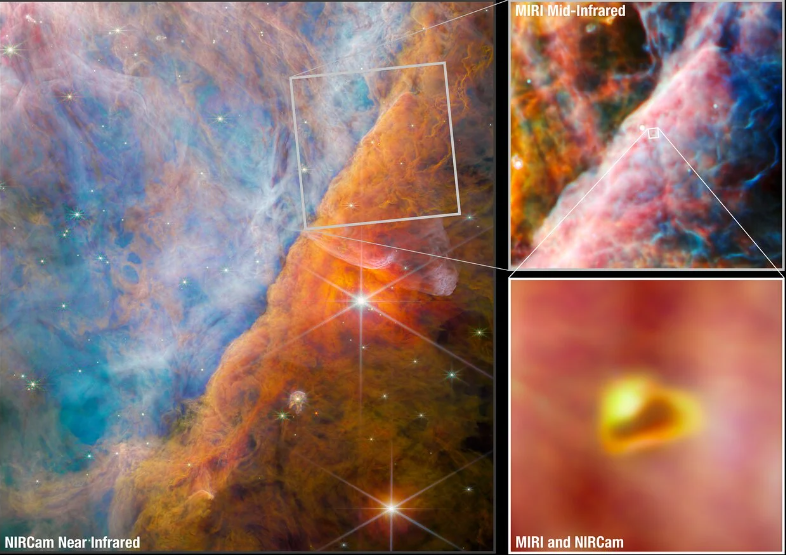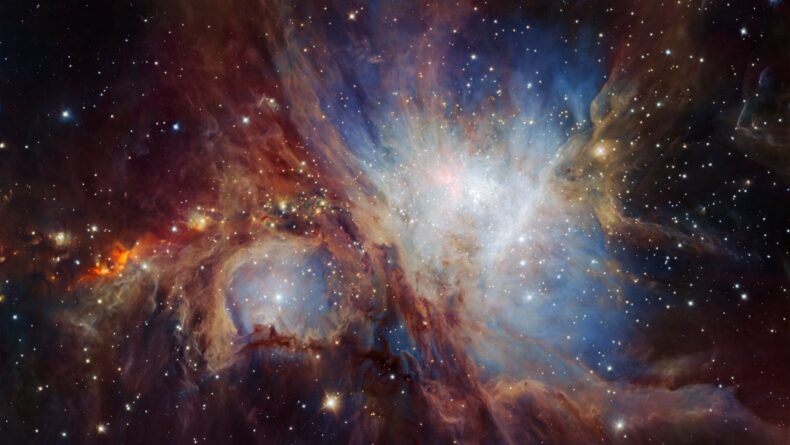Astrophotographers are drawn to the mesmerizing beauty of the Orion Nebula, one of the brightest deep sky objects visible from Earth. Many enthusiasts seize the opportunity to capture its magnificence using their DSLR or mirrorless cameras in conjunction with a telescope. However, the recent discovery made by the James Webb Space Telescope has taken the allure of this nebula to new heights. In a groundbreaking revelation, scientists have identified an essential life-forming molecule within a debris disk in the nebula, marking the first time it has ever been detected in outer space.
Understanding the Building Blocks of Life: Methyl Cation (CH3+)
To comprehend the complexity of life, it is crucial to understand how atoms come together to form molecules, enzymes, and DNA. Astronomers have achieved a significant milestone in this quest by detecting a fundamental step in this process—the presence of methyl cation (CH3+). This carbon compound plays a vital role in the intricate carbon chemistry necessary for life as we know it. In a study published in the journal Nature on June 26, researchers detailed this pioneering detection, representing an unprecedented achievement.

Webb Telescope’s Instruments Unveil the Mystery
The James Webb Space Telescope employed its NIRCam and MIRI instruments to investigate a specific area of the Orion Nebula where new and radiant stars are currently being born. These stars emit ionizing radiation, a type of light that causes the surrounding gas and dust to emit a distinct glow. However, this radiance holds more significance than mere visual appeal to observers on Earth. Spectroscopy instruments exploit this glow, breaking down the starlight into various wavelengths and analyzing the absorbed components.
Revelation of Methyl Cation in the Orion Nebula
By combining the data gathered by NIRCam and MIRI, scientists successfully identified the presence of methyl cation within a planet-forming disk that orbits a diminutive red dwarf star named d203-506. This star system lies approximately 1,350 light-years away from Earth. As a young system, it receives intense ultraviolet radiation from nearby stars. Intriguingly, while such radiation often disassembles organic molecules, it appears to have played a role in the formation of methyl cation in this particular case.

Image Source: diyphotography.net [ESA/Webb, NASA, CSA, M. Zamani (ESA/Webb), the PDRs4All ERS Team]
Ultraviolet Radiation’s Role in the Formation of Methyl Cation
Scientists propose that the high-energy ultraviolet radiation present in the vicinity might facilitate the formation of methyl cation. Curiously, other nearby disks with less exposure to radiation contain a higher proportion of water. In contrast, the disk surrounding d203-506 lacks any significant water content. This revelation suggests that the energy from the radiation potentially contributes to the formation of methyl cation, highlighting the transformative impact of ultraviolet radiation on the chemistry of protoplanetary disks.
Validation of Webb Telescope’s Sensitivity and Insights into Life’s Origins
The remarkable detection of methyl cation by the James Webb Space Telescope not only reaffirms the instrument’s extraordinary sensitivity but also confirms the molecule’s crucial role in interstellar chemistry. Marie-Aline Martin-Drumel, an astronomer at the University of Paris-Saclay and co-author of the study, emphasizes the significance of this finding. During the early stages of planet formation, protoplanetary disks encounter intense ultraviolet radiation, which was previously deemed detrimental. However, this research suggests that UV radiation may be instrumental in kick-starting organic chemistry, building complex carbon molecules, and laying the foundation for life within emerging solar systems.












